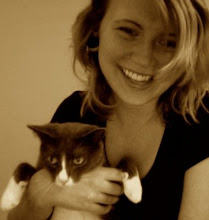At six o'clock today, there was a mandatory meeting held at my work. Jenifer Funk from the Boulder College of Massage Therapy gave a demonstration on canine massage, using her own dog Pilot as an example subject. Being I was previously interested in perusing alternative medicine and animal massage therapy as a career, I did find this seminar appealing. I took notes on technique to help retain the knowledge better. Though I felt that much of it was common sense, such as using long and gliding strokes to soothe an animal, I enjoyed the demo. (Wow, Pilot was a cutie! Gotta love a Visla.)
First of all, some of the vocabulary that we went over are terms for a certain type of massaging motion.
- Effleurage- a long, gliding stroke; used most frequently.
- Petrissage- Kneading strokes.
- Vibration or Shaking- quick, short rubbing motion which stimulates circulation.
- Compression- Pumping strokes that push blood out of a region, then allow it to return.
- Friction- A more firm, brisk stroke that is beneficial at breaking up scar tissue or adhesions in the muscles.
- Tapotement- Tapping or light, striking stokes; stimulating to the body.
At the beginning of the massage, your goal is to gently rub over the entire body and feel for and abnormalities or warm spots. This may lead you to discover things like
lipoma, fatty abscesses; anything irregular should be examined by a veterinarian. Do not apply pressure to these areas- they may cause discomfort or further damage. Warm spots must be massaged with extra care and close attention!
After this initial inspection, you work down the provided list of vocabulary from the dog's head to tail, as well as down the legs, chest, and belly. Each different massaging motion should be followed up by the gently and flowing effleurage strokes. When the shoulders and hips are warmed up via massage, you can gently extend them forward and back. If your dog is not willingly tensing his muscles and is fully relaxed, the stretching motion will relieve some tension and improve the range of motion. Do not force the leg farther than what is comfortable for the animal!
Jen also demonstrated Thumb-gliding(gentle, forward strokes with the thumbs), V-spread(Thumb-gliding apart in a V shape), and "angle wings" which I felt would be more appropriately called "knuckle kneading," as that is exactly what it was..
You can also gently massage your canine's gums if you and the dog are comfortable with this.
You can also grasp the tail and gently pull it up, down, and to each side. This is especially good before and after swimming as a long tail will act as a dog's rutter. The caudal and gluteal muscles will become sore without ample stretching due to a buildup of lactic acid; humans also experience soreness from this cause.
Also, here are a few provided resources which I plan to investigate.









